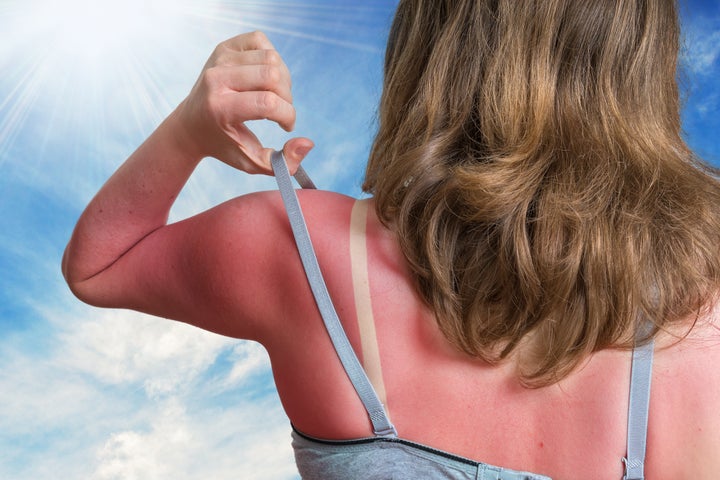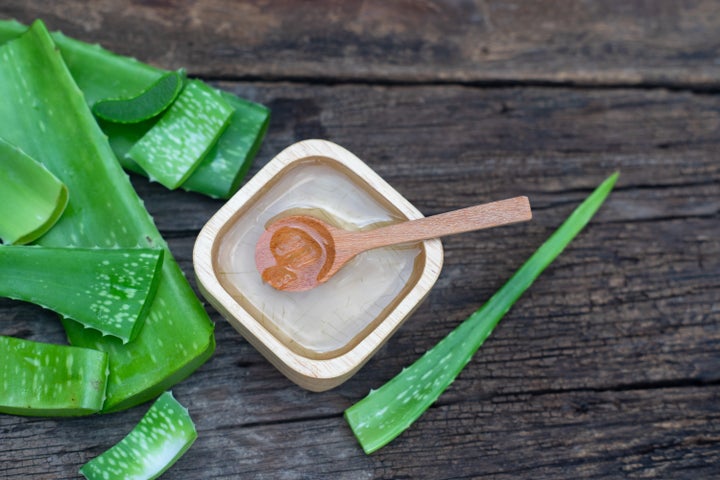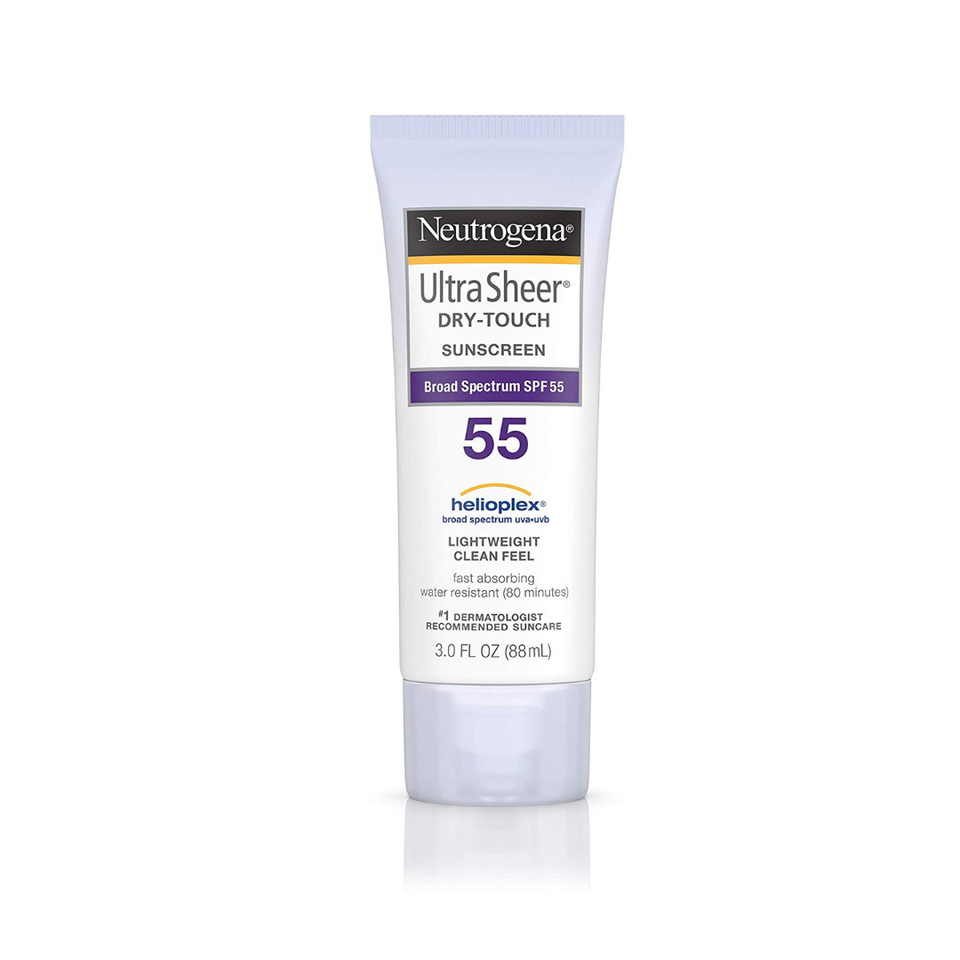Summer is here and we’re spending more time outdoors than ever, which means we should be paying extra attention to our sunscreen game. But accidents happen, and so do sunburns. In the case that you get one, you’d better know which sunburn remedies work best (and which don’t work at all).
The internet is saturated with DIY sunburn remedies (mayonnaise and sour cream are a couple rumored options), so in order to determine what actually works, we tapped two board-certified dermatologists to break down the best (and worst!) sunscreen cures that will cool and soothe burned skin, and speed up the healing process altogether.
From over-the-counter products to cow manure (yes, really), here are all the sunburn dos and don’ts to keep in mind next time you get a little too toasty.
Take NSAIDs as needed.
To reduce any inflammation and discomfort associated with a sunburn, dermatologist Dr. Kemunto Mokaya advised taking pain relievers within the NSAID (non-steroidal anti-inflammatory drug) family.
These include ibuprofen, naproxen or aspirin, she explained, which can easily be found at your local grocery or drug store.
“NSAIDs work best for sunburns when they are taken immediately after it occurs,” she told HuffPost. “However, some people have medical conditions (kidney problems) that limit their ability to take NSAIDs. This makes it important to share any medical underlying conditions with your physician first, before you proceed to take any NSAIDS at all.”
Apply cold milk to your skin.
Yep, this old wives’ tale actually has merit, as Mokaya said that the proteins inside cold milk can help soothe inflamed and sunburned skin.
Similarly, dermatologist Dr. Tsippora Shainhouse suggested that cold milk also contains lactic acid, which can help buff away any peeling or flaking skin associated with your burn.

“The lactic acid inside milk can help mildly exfoliate the peeling skin caused by sunburn, especially as the burn sheds and heals,” she explained.
To use cold milk on your sunburn effectively, Mokaya advised soaking a soft washcloth in cold milk and then dabbing the cloth on sunburned skin to cool it down.
Apply hydrocortisone cream to the burn.
If you’re looking for effective over-the-counter products to treat your sunburn, Shainhouse recommends adding some hydrocortisone cream to your shopping list, as this prescription-free topical steroid works to kick redness to the curb with each use.
“Apply a thin layer of hydrocortisone cream (Cortaid 1% or Cortaid hydrocortisone 1% cream) two to three times a day for up to a week,” she said. “This helps reduce inflammation in the skin.”
However, the American Academy of Dermatology advises checking your product labels carefully, as you won’t want to use any OTC products that contain benzocaine. Benzocaine-containing products, according to the AAD, may irritate the skin or cause an unwanted allergic reaction in some users.
Make a cold compress.
Shainhouse recommends using cold compresses to help reduce the burning or stinging sensation associated with sunburn.
“The cool water will physically cool the hot and burned skin,” she said. “It also will temporarily minimize the pain by propagating temperature impulses, instead distracting the nerves that propagate pain impulses.”
Make a compress out of black or green tea.
Believe it or not, Mokaya said that both green and black tea are great DIY cures for sunburn, as they contain tannins, which are naturally occurring polyphenols that boast anti-inflammatory properties.
These tannins help reduce the swelling and inflammation associated with sunburns, she added, allowing your burn to cool down effectively.
To make your own tea compress, Mokaya recommended brewing black or green tea and waiting for the tea to cool (or cool it faster by adding ice cubes). Then, soak a soft wash cloth in your tea and gently apply the cloth to sunburned skin.
Buy some aloe vera gel
Mom wasn’t lying to you when she told you to pick up some aloe vera gel, as Shainhouse said aloe vera plants contain anti-inflammatory properties that can help heal sunburns.

“Aloe vera contains a compound called aloin, which has anti-inflammatory properties that help reduce redness, swelling and pain, and may help speed healing in mild to moderate burns,” she told HuffPost. “Pro tip: refrigerated aloe vera gel can provide an even greater cooling sensation to the skin.”
However, because aloe vera is a natural plant ingredient, Shainhouse warned that it can cause allergic contact dermatitis if you aren’t careful. This makes it important to perform a spot test on your wrist before you proceed to use it.
Similarly, if you are looking for ready-to-purchase aloe vera products from your local drugstore, she advised looking for commercially prepared products formulated without alcohol, as alcohol-based ingredients (more on that below!) can cause stinging and irritation to your burns.
Up your vitamin D intake.
We all know that taking vitamin D supplements helps boost your immune system. However, you probably didn’t know that vitamin D can also be used to speed up the sunburn healing process, especially when taken in high doses, according to Mokaya.
“A 2017 study published in the Journal of Investigative Dermatology revealed that high doses of vitamin D taken one hour after a sunburn have been shown to reduce redness, swelling and inflammation,” Mokaya said. “Study participants who took higher concentrations of vitamin D also demonstrated less epidermal structural damage as well.”
Stay away from rubbing alcohol.
While the evaporation of rubbing alcohol is said to cool down inflamed skin, Mokaya warned against using alcohol and alcohol-based products on sunburns, as they strip away the skin’s natural oils.
And once these natural oils are stripped, she explained that this can cause the skin to become dryer, which ultimately makes irritation from your burn even worse.
Don’t use butter or petroleum jelly for sunburn — especially for blistered skin.
An old wives’ tale suggests applying butter to sunburned skin, but while it can feel soothing at first, Mokaya said butter can actually smother or suffocate the skin, trapping body heat. This, in turn, can worsen any existing inflammation (especially blisters) and make it harder for the burn to heal.
And much like butter, Mokaya added that petroleum jelly can be equally occlusive, as it also suffocates the skin and traps body heat.
Remember, prevention is always key.
When it comes to avoiding sunburn and sun damage, Shainhouse explains that prevention is always your best line of defense, as taking the right protective measures can make all the difference.
“If you must be outdoors, be sure to apply a broad-spectrum sunscreen with SPF 30+, and wear sun-shielding clothing with longer sleeves and higher necklines,” she explained.
Similarly, wearing wide-brim hats can be equally effective when you’re outside, as the American Skin Association suggested that these accessories provide protection to the face, neck and head areas.
Finally, you’ll also want to avoid being outside during peak hours, as the American Skin Association reported that UV exposure is greatest during the hours of 10 a.m. to 4 p.m.
However, if you must be outdoors during these hours, just be sure to wear the right protective clothing, and always ensure that you reapply your sunscreen often.
